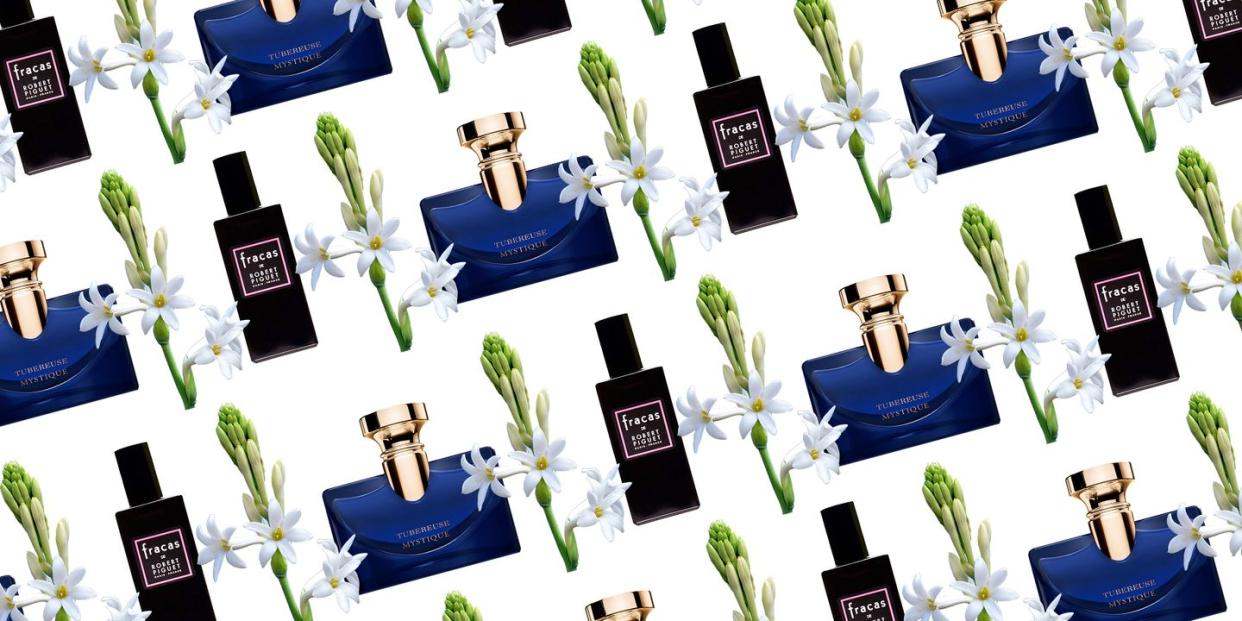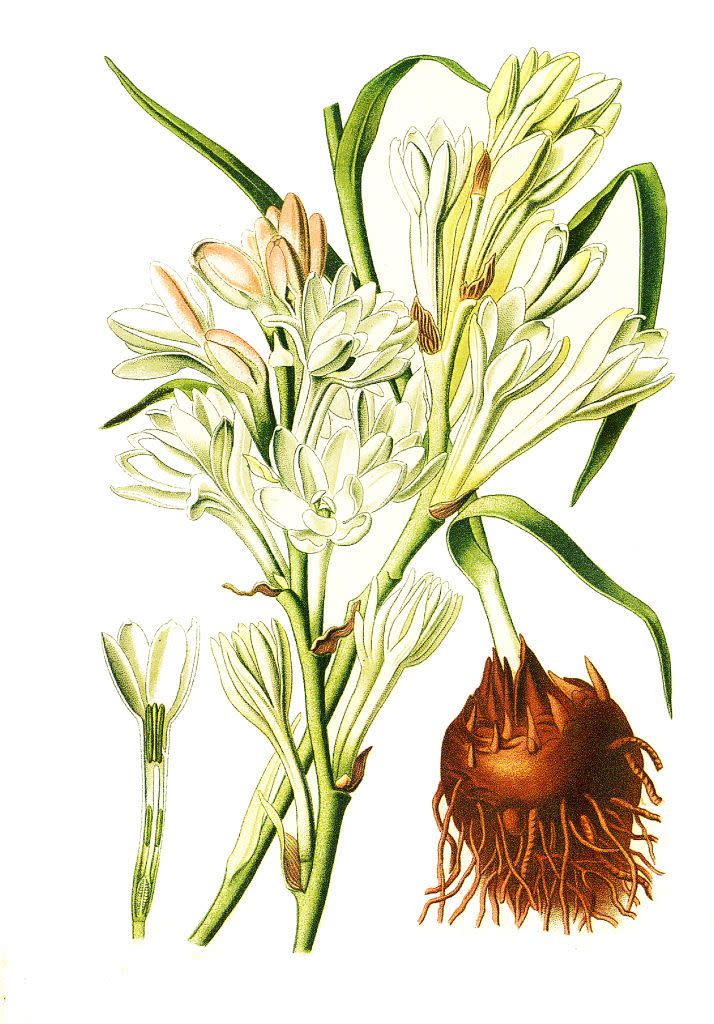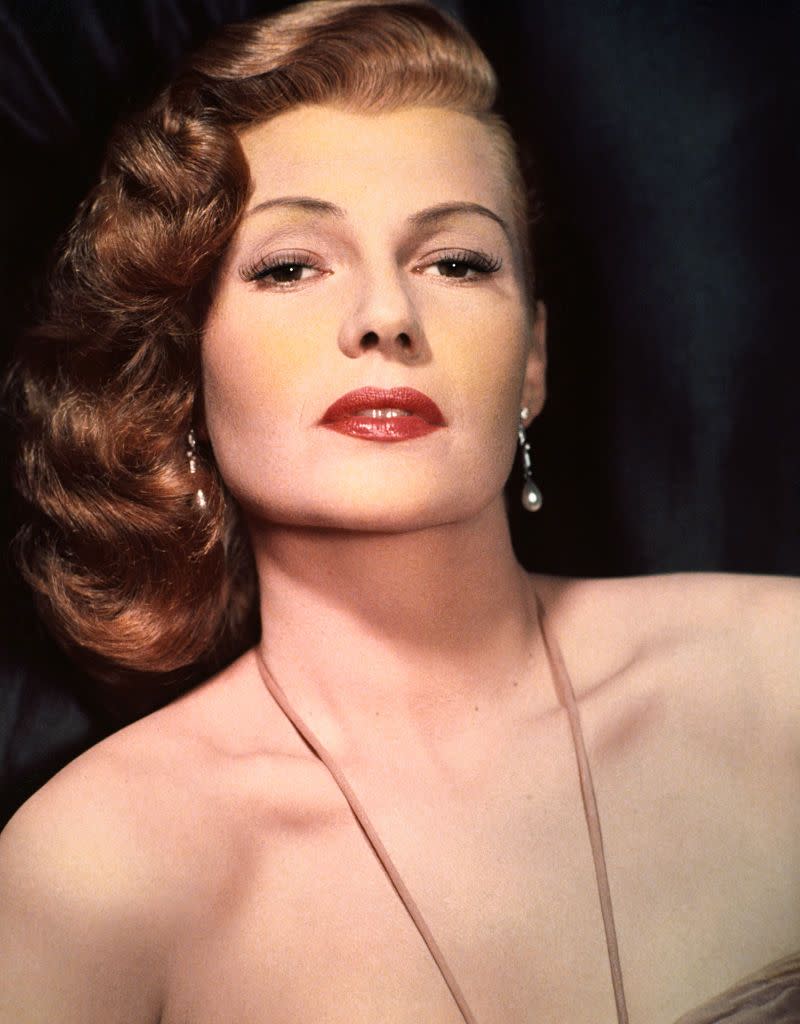The Most Unexpectedly Sexy Fragrance Note for Fall? Tuberose

“I love this flower because it’s deceptive,” says master perfumer Sophie Labbé of the tuberose. “You think she’s innocent, but she’s not. She’s dangerous.”
Tuberose flowers, which sprout in white, star-like clusters along dramatically long green shoots, emit one of the most alluring, and subversive, aromas used in perfumery. This floral femme fatale’s heady, narcotically sweet scent is often described as voluptuous, even fleshy— it has an almost physical weight when it hangs in the air. To the Victorians, it was so distressingly seductive that young women were warned not to get too close to the night-blooming blossoms lest an accidental whiff awaken dangerously illicit desire.

What makes tuberose so damn sexy? It comes down to chemistry. Like jasmine and gardenia, the flower’s aroma has an under-funk of indole, a molecule that’s also present in (sorry) feces. This intimation of rot, counterintuitively, is what makes it erotic: Indole is also produced in small amounts by our skin and released during sex. Jennifer Lawrence’s character in the movie American Hustle hit the nail on the head when describing the scent of her nail polish topcoat: “It’s perfumey… but there’s also something rotten. I know it’s crazy, but I can’t get enough of it. Historically, the best perfumes in the world…they’re all laced with something nasty. It’s true! Sweet and sour…rotten and delicious. Flowers, but with garbage…” Unless you have a super-attuned nose, you’re not going to be able to detect this weirdly titillating suggestion of intimacy and decay simply by sniffing a tuberose—but it’s there.
The plant itself is surprising: Despite its name, a tuberose is not a rose. It is, in fact, a member of the agave family, which gives us tequila. Though originally native to Mexico, it’s primarily grown in India, where is renown as the “mistress of the night,” and woven into lushly scented garlands to be worn at weddings, funerals, and religious ceremonies. Unknown in Europe until the 17thcentury, tuberose was one of Marie Antoinette’s favorite exotic botanicals (the specimen in her garden was imported from Central America), and a key ingredient in her beloved Parfum de Trianon. Marlene Dietrich loved the flowers so much she liked to eat them.

The first modern perfume to celebrate the heady aphrodisiac hum of tuberose was Robert Piguet’s Fracas, created by rebellious French perfumer Germaine Cellier in 1946—and inspired, purportedly, both by Rita Hayworth’s sultry glamour in Gildaand the scent of women’s underwear. Fracas, fittingly beloved by personality-plus women such as Madonna, Martha Stewart, and Isabella Blow, dials the heady, hothouse opulence of tuberose up to 11 with the addition of jasmine, tonka bean, and musk. The effect is so devastatingly powerful and staggeringly beautiful that Fracas has been a touchstone for virtually every other tuberose perfume created since.
If you’re a tuberose lover and don’t wear Fracas, chances are you’re spritzing on the flower’s second most famous appearance in perfumery: Editions de Frederic Malle Carnal Flower. Launched in 2005 after two years of trials, Carnal Flower is widely considered perfumer Dominique Ropion’s masterpiece. His goal was to capture the entire tuberose—bud to stem—in all of its many facets: herbaceous, milky, fruity, camphorous, green, and citrusy. To accomplish this, he blended massive amounts of the (ultra-expensive) absolute with notes of bergamot, melon, and eucalyptus, ylang ylang, coconut, orange blossom and musk, creating a radiant symphony of scent that lingers long after its wearer has passed by. Interestingly, it too was concocted with a cinematic muse in mind: Malle's aunt Candice Bergen, in 1971's Carnal Knowledge.

When Sophie Labbé began to work on Bulgari’s bewitching new Tubereuse Mystique, those two tuberose perfume icons were admittedly on her mind. She wanted to convey all of the flower’s sultry seductiveness, but it was of utmost importance to create an entirely new take. While researching the note, she discovered something quite shocking: Although tuberose is notoriously a night-bloomer, it had never been harvested for perfumery after sunset—meaning that what was extracted in the absolute would be more the scent of the bud than the open flower. “I smelled the flower from the morning to the evening and I realized that the smell is very different,” Labbé says. “When you smell the tuberose at night it’s richer, more generous. It emphasizes the lactonic creamy notes, the fruity peachiness. It’s much more powerful and orange-flower-like than the smell of the bud, which is greener. It’s addictive – you want to smell it again and again.”
To finally harness the flower’s intoxicating effect on the senses at the blue hour of twilight, Bulgari developed an exclusive night harvest process in India, when the flowers are hand-picked for distillation only when fully open to the moon and stars. Labbé blended this extraction with cassis to add sparkle, rummy vanilla for warmth, and, she says, “to capture the very specific and mystical aspect of the tuberose, I introduced myrrh, which has a darkness but also a freshness.” The final eau, which was previewed at a party this summer Lake Como this summer (attended by T&C September cover star Kitty Spencer) is a dramatic floral oriental—mysterious, hypnotic, and a worthy addition to the canon of wearable tributes to tuberose's majesty. "It's for a very daring woman," says Labbé. "She's dramatic, sensual, and very extraordinary." Isn't that who we all want to be?
You Might Also Like

